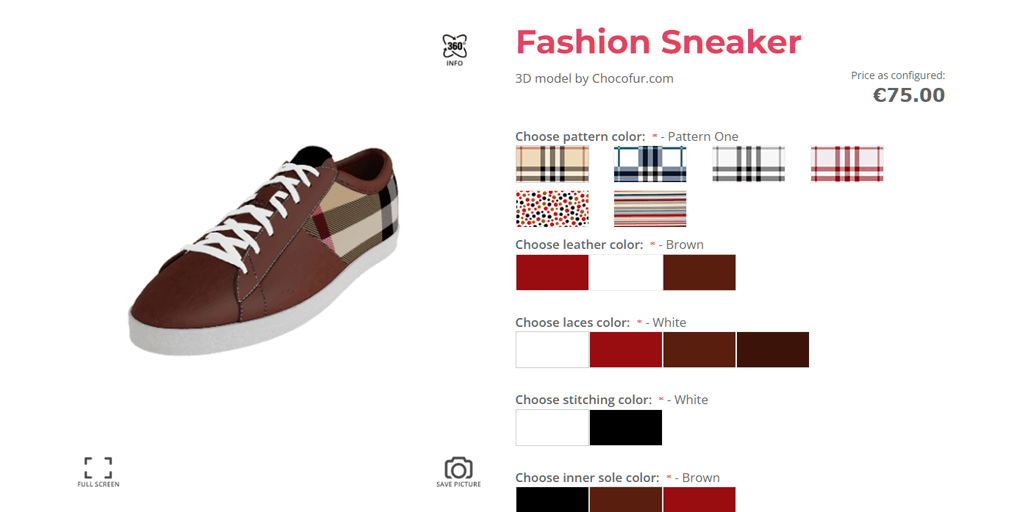Are you ready, online business owners, to dive into the world of digital product creation? It’s time to unleash your creativity and turn your ideas into profit with design apps. In today’s market, digital products have become a game-changer for ebook business models, offering endless opportunities for success. Whether you’re an aspiring entrepreneur or a seasoned professional, this is your chance to shine.
Creating digital products, like design apps and ebooks, has never been easier for online business owners. With just a few clicks, you can start your journey towards launch day and turn your business ideas into reality. From captivating content to easy-to-follow tutorials, the possibilities for your online business are limitless. Imagine the satisfaction of seeing your creation come to life and become a valuable addition to people’s lives.
In this fast-paced era, online business owners can explore new business ideas and revenue streams through digital product creation. Design apps and content marketing are key elements in this exciting opportunity. So buckle up and get ready for an exhilarating ride in the world of digital product creation – where every click opens a new tab of possibilities for global reach.
Understanding the Concept of Digital Product Creation
Digital product creation involves the process of developing and producing a variety of digital products, including design apps, ebooks, and productized services. This encompasses a wide range of items such as software applications, e-books, online courses, and digital art. The idea behind digital product creation is to transform an idea into a tangible product that can be distributed and accessed digitally, ultimately with the goal of selling these products.
There are several key elements involved in the process of acquiring new skills. These include taking a course, doing practical work, and focusing on one area of expertise.
Idea generation is crucial for creating a successful online business. The first step in developing a productized service or an ebook is to come up with unique and innovative ideas. These ideas should aim at solving problems or fulfilling needs within a specific niche.
Planning and design: Once the ideas for the online business and services are established, careful planning and design of the course are necessary. This involves outlining the features, functionality, and user experience of the digital product.
Development: The development stage brings the digital product ideas to life by coding, designing graphics, and integrating various components together. This applies to both digital services and courses. For example, when creating a digital course, the development stage involves coding the course platform, designing the course materials, and integrating interactive components.
Before launching the final product, rigorous testing ensures optimal performance for selling the course. Testing and refinement address any bugs or issues discovered to meet user expectations. For example, a report is generated to document the findings during this phase.
Digital product creation, for example a selling business course, differs from traditional product development in several ways. Unlike physical products that require manufacturing processes and distribution channels, digital products can be created solely using computer technology. Updates and improvements can be easily implemented without physical modifications or reprints.
Benefits and Opportunities in Digital Product Creation
Creating digital products offers numerous benefits for businesses and people. Let’s explore the pros and potential of venturing into the world of digital product creation, using a business course as an example.
Increased scalability and profitability compared to physical products: With digital products, such as dpc, there are no limitations imposed by manufacturing or shipping constraints. This means people can easily scale their business without worrying about inventory or production costs. As a result, digital product creators have the potential to achieve higher levels of profitability. For example, in a course on digital product creation, people can learn how to create and sell their own digital products.
Global reach and accessibility for a wider audience: Unlike physical products that may be limited by geographical boundaries, digital products can be accessed from anywhere in the world with an internet connection. This opens up a vast market of potential customers globally, allowing businesses to reach a wider audience and expand their customer base. For example, a business can offer an online course that people from different parts of the world can access.
The ability to leverage technology for automation and efficiency is crucial in digital product creation (DPC). Through DPC, people can harness the power of technology to automate various aspects of their business. For example, automated sales funnels and streamlined customer support systems can significantly enhance efficiency in delivering products to customers. By leveraging automation in the DPC course, people can save time, reduce manual workload, and focus on creating more value for their audience.
Exploring the Application of Digital Product Creation in the Fashion Industry
Fashion brands can revolutionize their business by utilizing digital product creation (DPC) techniques. This innovative approach has gained significant traction in the industry, transforming the way people design, produce, and distribute fashion.
Digital fashion has become a hot topic among business people, designers, and industry professionals. By embracing this trend, fashion brands can unlock numerous benefits and opportunities for growth. Let’s delve into how digital product creation (DPC) is making waves in the fashion world.
Enhancing Design Capabilities:
Digital tools empower designers to efficiently bring their product ideas to life, benefiting both people and the course of their work.
Virtual prototyping in the field of digital fashion enables people to easily create and test digital product ideas. It allows for quick iterations and adjustments, saving time and resources. With the help of easy digital downloads, individuals can efficiently develop their concepts and bring them to life in the digital realm.
Realistic 3D simulations help people, especially designers, visualize garments before production.
Streamlining Production Processes:
Digital product creation optimizes supply chain management, reducing lead times for people.
Collaborative platforms facilitate seamless communication between teams and suppliers.
Automated pattern-making and grading are essential for creating accurate digital product ideas. These processes minimize errors and ensure that people can rely on the final result.
Revolutionizing Distribution Channels:
Virtual showrooms provide an immersive experience for buyers worldwide.
E-commerce integration enables customers to explore collections online.
Customization options allow consumers to personalize their purchases.
Successful implementation of digital product creation techniques can be witnessed across various industries, including the fashion industry, where people have embraced these methods.
Adidas used 3D modeling software to design customizable shoes that perfectly fit people’s unique foot shape.
Burberry incorporated augmented reality (AR) technology into its app, allowing people to virtually try on clothing items before making a purchase decision.
The impact of digital product creation on the fashion industry cannot be overstated. It empowers people and brands to stay ahead of trends while meeting consumer demands efficiently. By leveraging these technologies, fashion companies can create products that resonate with people and their target audience on a deeper level.
Creating Digital Products that are in Demand
Identifying target audience needs and preferences through market research
To create digital products that are in demand, it is crucial to identify the needs and preferences of your target audience. Conducting thorough market research allows you to gather valuable insights into what your customers truly want. By understanding their pain points, desires, and expectations, you can tailor your digital product to meet their specific needs.
Developing unique value propositions for digital products
In the competitive world of digital product creation, it is essential to stand out from the crowd. Developing unique value propositions sets your offerings apart from others in the market. Consider what makes your product different or better than existing options. Highlight its benefits and advantages over similar digital or physical products. This will help attract customers and convince them why they should choose your product over others.
Utilizing data-driven insights to create relevant and desirable offerings
Data-driven insights play a vital role in creating successful digital products. Analyzing customer behavior, preferences, and purchasing patterns provides valuable information for crafting relevant and desirable offerings. By leveraging this data, you can identify trends, uncover untapped niches, and understand what features or functionalities resonate with your target audience.
By using these talking points as guidelines when creating digital products, you can increase the likelihood of meeting customer needs while also maximizing sales potential. Remember to conduct thorough market research to gain a deep understanding of your audience’s desires. Develop unique value propositions that set your product apart from competitors. Lastly, use data-driven insights to ensure that your offerings remain relevant and desirable in an ever-changing marketplace.
Creating successful digital products requires a combination of creativity, market knowledge, and strategic decision-making. By following these principles, you can increase the chances of developing products that resonate with customers and drive business growth.
Examples of Popular and Profitable Digital Products
E-books, Online Courses, or Tutorials Related to Fashion
Looking to monetize your fashion expertise? Creating digital products like e-books, online courses, or tutorials related to fashion can be a lucrative venture. Share your knowledge on styling tips, wardrobe essentials, or even DIY fashion projects. With easy digital downloads and platforms that facilitate online course creation, you can reach a wide audience and generate passive income.
Virtual Styling Tools or Personal Shopping Apps
In today’s digital age, virtual styling tools and personal shopping apps have gained immense popularity. These innovative solutions allow users to experiment with different looks virtually and receive personalized recommendations based on their preferences. By developing such applications or tools, you can tap into the entertainment industry while providing a convenient way for users to enhance their fashion choices.
Subscription-Based Services Offering Exclusive Content or Access
Subscription-based services have become a go-to choice for consumers seeking exclusive content or access. Consider creating a website that offers premium fashion-related content such as insider tips from renowned stylists, access to exclusive events, or early-bird discounts on designer collections. This approach not only provides recurring revenue but also fosters a loyal community of fashion enthusiasts.
By leveraging the power of digital product creation in the fashion industry, you can establish yourself as an authority while generating substantial profits. Whether it’s through e-books and online courses catering to various style preferences or virtual styling tools that offer an engaging experience, there are numerous avenues for success. Subscription-based services provide an opportunity to curate exclusive content that keeps customers coming back for more.
So why wait? Start brainstorming ideas and take advantage of the growing demand for digital products in the world of fashion!
How to Identify Market Needs and Trends for Digital Products
Conducting competitor analysis is a crucial step in identifying gaps in the market. By analyzing what your competitors are offering, you can identify areas where your digital product can stand out and meet the needs of your target audience. Look for unique features or functionalities that are missing from existing products and consider how you can incorporate them into your own offering.
Monitoring consumer behavior, preferences, and emerging trends is essential to stay ahead of the game. Keep a close eye on what consumers are looking for and adapt your digital product accordingly. Stay up-to-date with industry news, attend relevant conferences or webinars, and engage with online communities to gather insights about evolving market needs.
Utilizing social media listening tools can provide valuable information about what people are saying about similar products or services. These tools allow you to track conversations, hashtags, and mentions related to your target audience’s interests. By analyzing this data, you can gain insights into their pain points, desires, and expectations.
In addition to these strategies, consider leveraging dpc reports (digital product creation reports) that provide comprehensive market research on various digital product categories. These reports offer insights into industry trends, customer demographics, competitor analysis, and more. They can be a valuable resource.
By combining competitor analysis with monitoring consumer behavior and utilizing social media listening tools along with dpc reports, you’ll be equipped with the necessary knowledge to create a digital product that meets the demands of the market. Remember that understanding your target audience’s needs is key to developing a successful digital product that resonates with consumers in today’s ever-changing landscape.
Strategies for Creating High-Quality Digital Products
Investing in professional content creation is a great way to ensure the quality of your digital products. By hiring skilled photographers and videographers, you can capture stunning visuals that will captivate your audience. High-quality images and videos not only enhance the overall appeal of your product but also convey a sense of professionalism and credibility.
To create user-friendly interfaces with intuitive navigation, consider incorporating human-proof designs. These designs are centered around the needs and preferences of the users, making it easier for them to interact with your digital product. Intuitive navigation ensures that users can effortlessly explore different features and find what they need without any confusion.
Incorporating interactive features or gamification elements into your digital product can greatly enhance user engagement. Interactive elements such as quizzes, surveys, or interactive tutorials provide an immersive experience for users, keeping them hooked and encouraging them to explore further. Gamification elements like badges, leaderboards, or rewards add an element of fun and competition, motivating users to actively engage with your product.
When brainstorming product ideas, it’s essential to have a clear strategy in mind. Define your target audience and their specific needs to guide your ideation process. Consider conducting market research to identify gaps in the market and uncover unique value propositions that set your digital product apart from competitors.
Developing core skills required for digital product creation is crucial for delivering high-quality results consistently. Stay updated with industry trends and advancements to refine your skills continuously. Invest time in learning new tools and techniques that can streamline your workflow and improve efficiency.
Creating high-quality digital products requires effort and attention to detail at every step of the process. From concept development to design implementation, ensure that each aspect aligns with the desired level of quality. Regularly test prototypes or beta versions with real users to gather feedback and make necessary improvements before launching the final product.
By following these strategies, you can create high-quality digital products that provide a seamless user experience and deliver unique value to your target audience. Remember, investing in professional content creation, focusing on user-friendly interfaces, incorporating interactive features or gamification elements, and developing core skills are all key factors in achieving success in the digital product creation realm.
Tools and Resources for Digital Product Creation in the Fashion Industry
Graphic Design Software
Utilize design apps like Adobe Creative Suite to create stunning visuals, logos, and artwork for your digital products.
Take advantage of these tools to enhance your creativity and bring your artistic vision to life.
E-commerce Platforms
Consider using popular e-commerce platforms such as Shopify or WooCommerce to set up your online store.
These platforms provide a user-friendly interface that allows you to showcase and sell your fashion products with ease.
Learning Management Systems for Online Courses
Explore learning management systems like Teachable or Thinkific to create online courses and share your valuable fashion skills with others.
These platforms offer a structured system where you can organize course materials, engage with students, and monetize your expertise.
By leveraging these tools, technologies, and services in the fashion industry, you can streamline the process of digital product creation. Whether it’s designing captivating graphics or setting up an online store, there are plenty of resources available to help you succeed.
Consider utilizing Google Docs as a collaborative word processor where you can easily access templates, download assets, and collaborate with others in real-time. This cloud-based platform provides a convenient space for collaboration and document sharing.
Marketing and Selling Digital Products in the Fashion Industry
Utilizing social media platforms for targeted advertising:
Social media has become an essential tool for marketing in the fashion industry.
Online business owners can leverage platforms like Instagram, Facebook, and TikTok to reach their target audience.
By creating engaging content and using relevant hashtags, businesses can increase their visibility and attract potential customers.
Collaborating with influencers or fashion bloggers is another effective strategy to promote digital products.
These influencers have a loyal following who trust their opinions and recommendations.
Implementing effective email marketing campaigns:
Email marketing is a powerful tool to engage with customers and drive sales.
Online business owners can build an email list by offering incentives like discounts or exclusive content to subscribers.
They can then send personalized emails showcasing new product releases, special promotions, or behind-the-scenes content.
By segmenting their email list based on customer preferences, businesses can ensure that recipients receive relevant content tailored to their interests.
Collaborating with influencers or fashion bloggers for promotion:
Influencers play a significant role in shaping consumer trends in the fashion industry.
Businesses can partner with these influential individuals to promote their digital products.
Influencers can create sponsored posts featuring the products or even collaborate on limited-edition collections.
This collaboration not only increases brand exposure but also builds credibility among the influencer’s followers.
Maximizing SEO for Increased Visibility and Sales
Conducting keyword research to optimize product descriptions
To ensure maximum visibility and increase sales, it is crucial to conduct thorough keyword research when creating digital products. By identifying the most relevant keywords, you can optimize your product descriptions and improve search engine rankings. This allows potential customers to find your offerings more easily. Consider using tools like Google Keyword Planner or SEMrush to discover high-ranking keywords related to your product.
Creating engaging and shareable content to improve search rankings
Another effective strategy for maximizing SEO is by creating engaging and shareable content. By producing valuable blog posts, videos, or social media updates, you can attract more traffic to your website. This not only improves search rankings but also increases the chances of potential customers sharing your content with their networks. Utilize content marketing techniques such as storytelling, informative guides, or entertaining videos that resonate with your target audience.
Optimizing website speed and mobile responsiveness
In today’s fast-paced digital landscape, optimizing website speed and ensuring mobile responsiveness are essential factors for SEO success. Slow-loading websites lead to higher bounce rates and lower search engine rankings. To enhance user experience, consider implementing these strategies:
Compress image files without compromising quality.
Minimize HTTP requests by combining CSS and JavaScript files.
Enable browser caching for faster page loading on return visits.
Use a responsive design framework like Bootstrap or Foundation for seamless mobile browsing.
By prioritizing website speed and mobile responsiveness, you provide a positive user experience that can boost both visibility and sales.
Key Takeaways from the World of Digital Product Creation in Fashion
Digital product creation has had a significant impact on the fashion industry, offering many advantages and opportunities. Fashion brands can now use this technology to produce high-quality digital products that meet the demands and trends of the market. This allows for innovative designs and more efficient production processes.
It is important for fashion brands to understand the needs and trends of the market when creating digital products. By identifying what customers want, brands can develop products that are in demand, leading to increased sales and profitability. Utilizing the available tools and resources for digital product creation is crucial in the fashion industry. These tools streamline the design process and ensure high-quality output.
Effective marketing strategies also play a vital role in successfully promoting and selling digital products. To increase visibility and sales, optimizing SEO is essential. By implementing SEO techniques, fashion brands can improve their online presence and attract more potential customers.
The fashion industry has seen significant growth and innovation in digital product creation in recent years. With the help of easy digital tools and technologies, designers and brands now have the ability to bring their creative ideas to life in a digital format. This opens up a whole new world of possibilities for digital products in the fashion industry.
Digital fashion has become a popular trend, with virtual clothing and accessories being created and showcased online. This allows consumers to explore different styles and looks without the need for physical garments.
It also provides a global platform for designers to showcase their creativity and reach a wider audience. One important lesson from the world of digital product creation in fashion is the importance of embracing digital technologies in the design process. By using easy digital tools, designers can streamline their workflow and bring their ideas to life more efficiently. This not only saves time and resources but also encourages experimentation and innovation.
Another key takeaway is the limitless potential for digital product ideas in the fashion industry. From virtual try-on experiences to personalized digital fashion collections, there are countless opportunities for brands to engage with their customers in a unique and interactive way. By embracing digital fashion, brands can create immersive experiences that
Key Takeaways from the World of Digital Product Creation in Fashion
Advantages and Opportunities in Digital Product Creation for Fashion Brands
Meeting Market Demands and Trends: Digital product creation allows fashion brands to produce high-quality products that align with the demands and trends of the market. This enables the creation of innovative designs and more efficient production processes.
Understanding Customer Needs and Trends
Developing In-Demand Products: By understanding the needs and trends of the market, fashion brands can develop products that are in demand, leading to increased sales and profitability.
Utilizing Tools and Resources for Digital Product Creation
Streamlining the Design Process: Utilizing available tools and resources for digital product creation streamlines the design process and ensures high-quality output.
Effective Marketing Strategies for Digital Products
Optimizing SEO for Increased Visibility and Sales: Implementing effective SEO techniques is crucial for increasing visibility and sales of digital products. By optimizing SEO, fashion brands can improve their online presence and attract more potential customers.
Growth and Innovation in Digital Product Creation
Bringing Creative Ideas to Life: With easy digital tools and technologies, designers and brands now have the ability to bring their creative ideas to life in a digital format, opening up a whole new world of possibilities for digital products in the fashion industry.
The Rise of Digital Fashion
Virtual Clothing and Accessories: Digital fashion has become a popular trend, with virtual clothing and accessories being created and showcased online. This allows consumers to explore different styles and looks without physical garments and provides a global platform for designers to showcase their creativity.
Embracing Digital Technologies in the Design Process
Streamlining Workflow and Encouraging Innovation: Embracing digital technologies in the design process allows designers to streamline their workflow, saving time and resources while encouraging experimentation and innovation.
Limitless Potential for Digital Product Ideas
Immersive Experiences and Personalization: From virtual try-on experiences to personalized digital fashion collections, there are countless opportunities for brands to engage with their customers in a unique and interactive way
Digital Assets
Digital assets are a crucial component of the world of digital product creation in fashion. These assets refer to any digital files or resources that are used in the design and production process of fashion products. They can include images, graphics, patterns, textures, logos, and other visual elements that are used to create digital prototypes, samples, and final products.
When it comes to digital assets in fashion, there are several key features, pros, and cons to consider. Let’s compare them in the table below:
| Features | Pros | Cons |
|---|---|---|
| Easy to store and organize | – Saves physical space <br> – Quick and easy access to files | – Risk of data loss if not properly backed up |
| Easy to share and collaborate | – Seamless collaboration with team members and stakeholders <br> – Faster communication and feedback | – Security concerns if files are not properly protected |
| Versatile and scalable | – Can be easily resized and adjusted for different purposes <br> – Can be reused and repurposed for future projects | – Requires software and technical skills to create and edit |
| Cost-effective | – Eliminates the need for physical samples and prototypes <br> – Reduces production costs | – Initial investment in software and equipment |
In terms of options and examples, there are various software and tools available for creating and managing digital assets in fashion. Some popular options include Adobe Creative Cloud, CorelDRAW, and Canva. These tools offer a wide range of features and functionalities to create, edit, and organize digital assets.
When it comes to using digital assets in the fashion industry, there are a few steps to follow:
Identify the purpose and requirements of the digital asset.
Create or source the necessary files, such as images, graphics, or patterns.
Use software or tools to edit and manipulate the digital assets as needed.
Store and organize the digital assets in a secure and accessible location.
Share the digital assets with team members or stakeholders for collaboration and feedback.
Use the digital assets in the design and production process of fashion products.
By utilizing digital assets, fashion designers and brands can streamline their workflow, reduce costs, and enhance collaboration. Digital assets offer a flexible and efficient way to create, store, and share visual resources in the digital age.
So, whether you’re a fashion designer, brand, or enthusiast, embracing digital assets can revolutionize the way you create and produce fashion products. With the right tools and strategies, you can leverage the power of digital assets to bring your creative visions to life.





